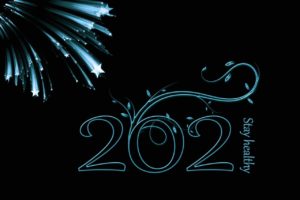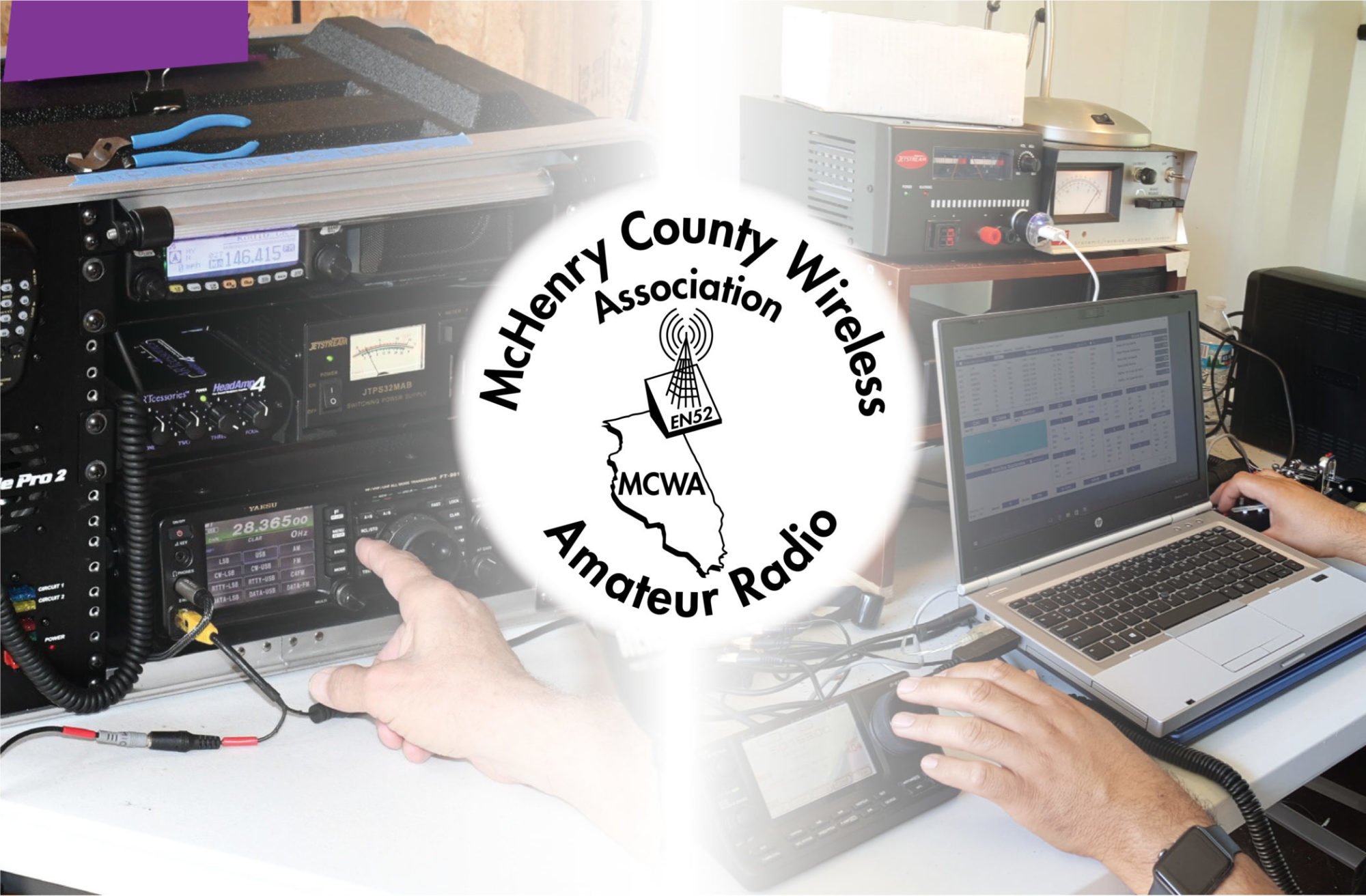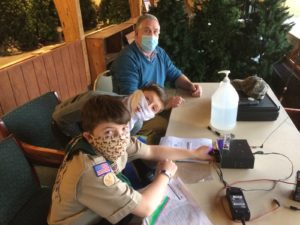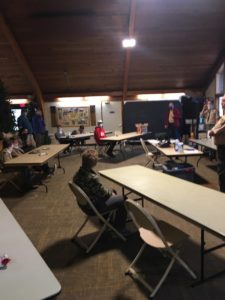
My Dream DXpedition as told to Ralph, WB9ICF
Copyright (c) 2020 by Ralph Iden, All rights reserved.
Part 1
I have been looking forward to this trip for a long time. By all accounts, this year has been one for the books. At work, things are always hectic, especially leading up to the holidays. But with the pandemic and all, it was a doozy. In my line of work, I do a LOT of traveling, but I think that I must have set a record for travel this year as I shored up supply chains to make sure we could deliver on-time what we promised. After all the hustle-and-bustle and traveling, I was sorely in need for some serious R&R where I can kick back and play radio. That time was just around the corner.
When I first shared the plans for a unique DXpedition with my ham buddies on our local net, they were very excited about the idea. But when it was revealed where the destination was, they thought I was daft.
“If you think the winters around here are cold, wait until you get to your dream vacation spot!” they chided me.
I enjoyed hearing their comments and suggestions and good-naturedly responded, “Yes, but you forget that when it’s winter here, it is summer in the southern hemisphere.” I added that we could expect temperatures as high as a balmy 48 degrees.
Plans for this expedition have been underway for nearly three years and after countless hours of negotiations, nailing down the logistics, and obtaining the necessary permits, the moment has arrived. Tomorrow morning, I am off to Ushuala, the southernmost city in Argentina and from there, the seventh continent, Antarctica.
Although there have numerous activations from Antarctica in the past, this DXpedition is special because it is the first to involve most of the nations that have or had a presence in Antarctica: Argentina, Australia, Belgium, Chile, France, Japan, New Zealand, Norway, South Africa, the Soviet Union, the United Kingdom, and the United States. The QSL cards from each entity will be a sought-after item and those with a clean sweep will earn special recognition.
Even after all the planning, I feel anxious that the team has overlooked some aspect or detail. Sleep eludes me as I am both excited about tomorrow and apprehensive at the same time. Still, all that could be done has been done. My mind finally quiets, and I sleep.
Part 2
The next morning, I arose before dawn having hardly slept a wink. I did a quick check-in with the other team members to make sure that there weren’t any last-minute complications. Some had already arrived in Antarctica by way of Chile or Argentina, some were en route, and the rest were getting to depart just as I was about to do.
As my specialty is logistics, it was my responsibility to make sure all the necessary equipment and supplies arrived and were available to the stations and operators. I was relieved to hear that all was well. I would be taking along some additional items and backup equipment, just in case.
It was going to be a long travel day, so I made myself and my honey a hearty breakfast before packing up the rest of my gear for the trip and getting ready to leave.
When it was time to go, I gave the missus a hug and kiss and said, “Wish you could come along.”
“Maybe next time,” she replied. As I was walking out the door, she waved and said, “Good luck on your disposition, dear. I love you.”
“DXpedition, honey. And I love you too.” I said closing the door and walking to the garage.
After making sure that everything was stowed away securely and I had the necessary travel documents, it was time for the adventure to begin. The flight to Argentina was going to be a long one and would involve a number of stops, but it would give me plenty of time to imagine the great time ahead of us: the camaraderie, the pileups, and working side-by-side with hams from around the world at one of the world’s most exotic locations. It was certainly going to be an experience that I would never forget.
Once I made sure the stations were outfitted and set up, I would be taking turns operating out of at least three stations based in their sponsoring country’s research facilities. We were also going to be operating from one of the ships that ferry tourists around Antarctica over the summer season, exposing the visitors to amateur radio and making them a part of this historic event.
I took full advantage of the layovers to stretch my legs and get some nourishment. On the final leg of my journey, thoughts turned to upgrades to my station that I would like to make in the upcoming year. I was pretty satisfied with my setup at home, but maybe a bigger tower with stacked yagis would be a good investment. However, wind loading would be a factor, especially with the added height. Things to consider, for sure.
One thing that I knew I would do would be to change the radio I use when I travel. My Yaesu FT-857D has been a solid performer and compact, but it’s getting along in years and it has been discontinued. Its replacement, the FT-891, is QRP and I would lose 2m and 70cm. I really like the Elecraft KX3, the output power being somewhat higher, but I still lose 2m and 70cm. Maybe I should give serious consideration to the new Icom IC-705, which should be coming out soon. It looks like the bee’s knees and would not only pack well in my overnight bag, but I could mount it on the dash and even add an amplifier or two. I close my eyes and imagining what it would be like operating each radio, especially admiring the color touchscreen of the IC-705.
Part 3
I must have fallen asleep for who knows how long, but I could see that we were on final approach to Ushuaia International Airport. There was a spectacular display of the aurora australis (the southern lights). While not unheard of in summer, it was clearly visible even during this season of the midnight sun. How very unusual, especially since there wasn’t any unusual solar activity reported prior to departure. Still, it came as a pleasant surprise, at least that was what I thought at the time.
After clearing customs and making sure that our precious cargo had arrived undamaged, I was met by three of our multi-national DXpedition team, Mario, Sven, and Antonio. Mario, Sven, and I were veterans of other DX club operations, but this was Mario’s first stint on our team. He said that he was very eager for what was to come. I smiled when he said that I looked familiar even though this was the first time that we have met. “You might have seen my QRZ profile or maybe one of the pictures from previous adventures in our club newsletter,” I speculated.
We enjoyed a wonderful meal of local cuisine, catching up with what everyone has been doing, reliving past activations, and discussing what the next few weeks would bring. I was glad to hear that all the equipment except for what I brought with me was either on location or about to reach King George Island by morning and then forwarded to the final destinations.
The four of us learned a week ago that we would have to take the more adventurous Drake Passage route via ship instead of flying to King George Island ourselves. Antonio apologized profusely for this change of plans, “No flights available. Maybe we get lucky and our journey will be more Drake Lake than Drake Shake,” he added hopefully. The Drake Passage is notorious for its fierce and unpredictable conditions and you never know how a given journey will go. After a nightcap, we turned in early since we would need to leave on our 400-mile journey to South Shetland Islands early in the morning.
I wish I could say that it was a smooth journey, but it was definitely “Drake Shake” and not “Drake Lake”. The seas were rough and people were constantly being tossed from side-to-side causing most of the passengers to become seriously sea sick despite the medications that were offered. The tables and chairs chained to the floor and the extra padding should have been a warning. Fortunately, I have logged so many flight hours and I have seen more than my share of turbulence, so I faired well. But it was touch-and-go prompting the captain to announce that we might have to abort and head back to port, which could either be in Argentina or South Africa, depending which ended up being closer. Sven looked puzzled until he realized that we were located so far south that Africa wasn’t as far away as he first thought.
However, we made it and soon joined the rest of the team. Over the next week we traveled to each of the research stations and the primary tourist cruise ship to setup and test the equipment. Predictably, two of the radios and one antenna were giving us problems, but that is where the extra equipment that I brought saved the day. Propagation looked to be favorable for the duration of the event, but the sporadic aurora was definitely having a negative impact on our signals. No one could remember anything like this level of aurora activity at this time of the year and marveled that you could even see it so clearly in the daylight.
After three years planning, nearly insurmountable logistics and political challenges, and tens of thousands of miles traveled, tomorrow is showtime and we were eager and ready to go.
Part 4
The DXpediton got off to a great start. It was obvious that the quest to score QSOs with each of our stations was very motivating to those trying to contact us and the pileups were amazing and often overwhelming. Our stations were being spotted everywhere, even on bands and frequencies when none of our stations were operating! Listening to the cacophony of signals trying to pull out a call or part of a call was challenging. People were so impatient.
The teams operated around the clock running CW, FT4/FT8, and SSB, constantly uploading contacts to Club Log. It looked like we were on track to make a record number of QSOs during our three-week period of operation. When I took my turn in the rotation, I was having the time of my life. It was simply incredible. The tourists and other onlookers viewed us with both puzzlement and wonder as we racked up the Qs one after another.
We also learned that the aurora anomalies and signal disruptions were occurring in the northern hemisphere as well and they were strengthening. The solar weather forecast gave no indication that this should be happening, the phenomena continuing to be a mystery.
It was the afternoon of the ninth day of operations that things went totally off the rail.
The geomagnetic disturbances were becoming more frequent as the days passed and now a relationship between the disturbances in the northern and southern hemispheres was being observed. At 02:40:19 UTC, the aurora and the related radio disruption at both poles began a slow oscillating flickering pattern with the frequency increasing over the next 36 hours. Then it suddenly stopped for a few moments, resumed for a short period of time, and finally stopped completely. No aurora, no radio interference, everything back to normal for a typical Antarctica summer. But things were far from normal.
Part 5
Within minutes of the oscillations beginning, a flurry of reports were being received from around the world describing an apparent collapse of global navigation systems and systems that depended upon GPS. No one knew for certain what had happened, but speculation ran rampant with the popular theory being some sort of accidental or deliberate use of a hitherto unknown magnetic energy weapon was employed. Researchers noted that migrating birds and animals that employed magnetic sensing were suddenly confused and wondering about aimlessly. Another serious consequence was an increase in exposure to cosmic radiation due to the unstable magnetic fields.
Later, we came to understand that what had happened was that there was a complete reversal of the north and south poles. This has happened before, the last time some 780,000 years ago. Scientists knew that the poles would flip again at some point, only no one knew when and what would happen when they did. Now we know. What all of this meant for our DXpedition was that it was over. Just like that. All resources were being marshalled to understand what just happened and restore the global navigation and communications systems. That meant a temporary suspension of amateur radio activity world-wide.
A more serious problem for our team and the visiting tourists was that we were all stranded for the time being. Although the GPS system still functioned, navigation systems no longer understood what north and south were anymore. In our part of the world, the magnetic field scintillations were interfering with the signals received by the GPS receivers introducing errors and it was deemed too dangerous for aircrafts and ships to navigate solely using GPS. Compass readings were ineffective and going old-school navigating by the stars would have to wait until the period of the midnight sun ended and a night sky could be observed.
Our provisions would have to be very carefully managed as it was never intended that the temporary increase in the local population would extend past a few weeks. I began to think that we should have packed the heavy-duty winter parkas as the weeks passed and the continent moved towards an Antarctic winter and its staggering 55 degree below zero temperatures.
We got to know many of the researchers and some of the tourists that certainly were experiencing the adventure of a lifetime. We shared out fears about our future and drew comfort and strength from each other. But as I sat in my bunk listening to the howling wind, the cold creeping into my bones, I wondered what the next day would bring.
Part 6
I awake the next morning and things have drastically changed. First, I am not cold. In fact, I am toasty warm. When I realize that I have woken up in my own bed and at home, I am stunned. How could that be? Am I hallucinating? Everything seemed so real. I gingerly get out of the bed and go to the window. I WAS home and safe.
Just then, the missus comes into the bedroom with a cup of hot cocoa and some freshly baked pastries.
“Merry Christmas, dear!” she said cheerfully.
“And a Merry Christmas to you!” said I with even greater joy. “I just had the most amazing and disturbing dream. It felt so real and it was scary.”
She replied, “You probably had a little too much Christmas cheer and something didn’t agree with you. Did you stay away from the Glögg and lutefisk this year?”
“The lutefisk, definitely. Maybe a wee nip of Glögg and some other Christmas treats,” I replied sheepishly adding, “Something smells really good.”
“That would be our Christmas breakfast,” she said as she headed downstairs. “Hurry up. Take your shower, get dressed, and come downstairs to see what I have prepared for us. Then we can open our presents.”
After showering and getting dressed, I went downstairs and took in the wonder of the season. Besides the heavenly smell of fresh bacon and cinnamon rolls, the house looked and felt like a winter wonderland. I could smell the fresh pine from the tree and wreaths. The tree was trimmed with the finest tinsel, ornaments, and lights. Everything was just perfect. Nobody knows how to decorate for Christmas like the missus.
We leisurely ate our breakfast, enjoying each other’s company while we watched the snow gently fall through our large picture window. All the stress of the year seemed to vanish in an instant. It is times like these that make it all worthwhile.
After cleaning up the breakfast dishes, we sat down to exchange Christmas presents. We have exchanged countless presents over the years and a point has been reached where each of us has everything we need. So, besides the usual pieces of clothing (new scarves, mittens, etc.), we have made it a tradition of making or choosing something personal for each other.
This year she gave me an embroidered blanket with my callsign and the various DXpeditions that I went on. And I gave her a $2500 gift certificate from Ham Radio Outlet.
Actually, I didn’t do that. The missus would not have appreciated that thoughtful gesture. My gift was an animated snow globe that depicted how we met and our early life together. It was special and one-of-a-kind gift.
When I thought we had exchanged all the gifts, I noticed a small box left under the Christmas tree with my name written on it along with a card.
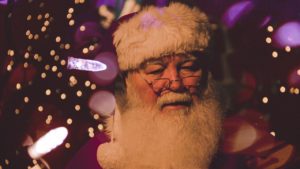
Dear Santa,
After all the gifts you have given others all these years, I thought that it was time that you received something in return.
I unwrapped the box and was amazed to see a brand new Icom IC-705 transceiver! I saw an early prototype a year or two ago on a visit to Japan, but it has been such busy year that I didn’t realize that they were now available. A thoughtful gift that worked its way into my dream last night.
I continued to read the card.
This is a fantastic radio. It has everything a ham would want including a color touchscreen! It won’t take up much space on your sleigh so you can make some contacts as you go about your deliveries.
I’m thinking of making a YouTube video on the 705 comparing it to the KX3, but I guess I would have to buy a 705 first. Maybe if you aren’t too busy after the first of the year we could meet and do a video together after you have road tested the 705 a bit?
Merry Christmas and give my best to the missus and the elves.
73,
Dave K9AT
P.S. I couldn’t resist. I tried it out, but just to make sure it wasn’t defective. 😊 You will love it. Especially the color touchscreen.
Merry Christmas to one and all and to all, good DX.

